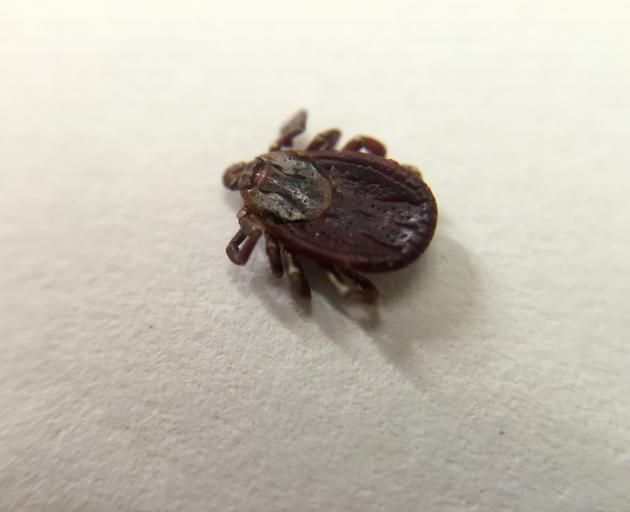
Ticks are parasitic arachnids of the order Ixodida.
They are part of the mite superorder Parasitiformes.
Adult ticks are about 3-5mm in length depending on age, sex, and species.
Biosecurity NZ in a surveillance report released for the third quarter of last year recorded an incident which occurred in Gore.
A medical practitioner from Gore rang the exotic pest and disease hotline to report finding a tick on a man who had returned from the United States.
The patient had travelled for three weeks in the Connecticut Berkshire Mountains area.
Six days after returning to New Zealand he discovered the tick attached to his skin and visited his doctor.
The tick was successfully removed and sent to the Ministry for Primary Industries’ Plant Health and Environment Laboratory (PHEL) in Auckland. There it was identified as Dermacentor variabilis, commonly known as the American dog tick.
This tick is predominantly found in the US, mainly east of the Rocky Mountains, but can also occur in certain areas of Canada, Mexico and the Pacific Northwest of the US.
The American dog tick is a three-host tick and requires a blood meal before progression from each stage.
The full life cycle takes at least 54 days to complete.
D. variabilis as a larva and nymph targets small mammals, then larger animals as an adult.
It is normally found on dogs but will readily attach to larger animals such as cattle, horses and humans.
The tick is known to be a vector of the bacterium Rickettsia rickettsii, which causes Rocky Mountain spotted fever, and Francisella tularensis, which causes tularaemia in humans, so the traveller was monitored carefully for symptoms by the doctor.
The tick removed from this patient was a female that had not yet fed.
Since D. variabilis is not parthenogenetic, unless a male was also present or a second female that had been fertilised and managed to feed on the host (both deemed unlikely), the risk of establishment in this case was very low.
The patient monitored himself and his two pet dogs over the following month and also treated both dogs with an appropriate veterinary medicine for the prevention/treatment of ticks. — APL












